Churchill, Canada offers an exciting photographic journey into the world of the polar bears. In the center of Canada … in the far north … lies a massive inland sea called Hudson Bay. A point of land extends into the bay on the western shore at about the half-way mark. This is Cape Churchill and the location of the remote town of Churchill. During the summer months, the town is a major shipping port for Canadian grain. It’s also a hub for scientific studies, researchers, and tourists during all times of year. But in late October or early November, winter pack ice begins to form on the bay, and the area again becomes wild and free–the home of the polar bear…and a great place for photographing polar bears.
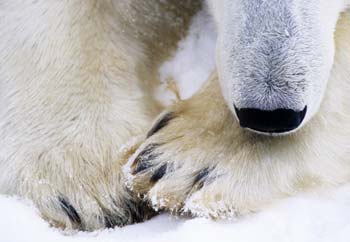
In the center of Canada … in the far north … lies a massive inland sea called Hudson Bay. A point of land extends into the bay on the western shore at about the half-way mark. This is Cape Churchill and the location of the remote town of Churchill. During the summer months, the town is a major shipping port for Canadian grain. It’s also a hub for scientific studies, researchers, and tourists during all times of year. But in late October or early November, winter pack ice begins to form on the bay, and the area again becomes wild and free–the home of the polar bear.
The polar bears are circumpolar–living in all the areas that surround the northern polar region. Hudson Bay has the southern-most population of polar bears. Each winter, large numbers of polar bears come to the Churchill area to wait for the ice pack to form.
In 1689, a fort was established at Cape Churchill. In fact, markers and canons still stand in place there. But one of the early explorers scratched on a
rock a realistic assessment of the location: “most miserable place.” And it certainly can be when the wind and the cold conspire and silent winter settles
in. When I visited the area, the temperature was zero degrees Fahrenheit with a nasty thirty-knot wind blowing off the bay.
If you wish to photograph in the area around Churchill, you’ll have to be dressed well. When you’re working in intensely cold situations like these, it’s vital that you keep your comfort and safety in mind. You can’t do a good job with your photographs when your hands or feet are freezing. Proper clothing is important to keep the cold and the wind away from your body. I dress in layers and find that silk and many of the new ” wonder” fabrics do an amazing job under wind-proof parkas and pants. Boot liners are also a must.
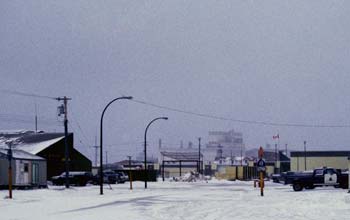
Copyright © Noella Ballenger
The town of Churchill, Canada is the summer shipping port for Canadian grain,
but in winter it is the center for polar bear viewing.
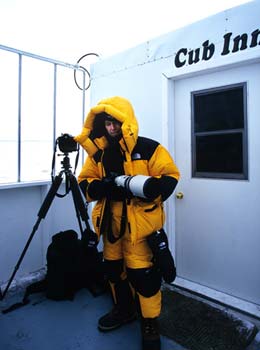
Copyright © Noella Ballenger
It is important to dress warm
layers when traveling to visit the polar bears.
This is one of the open platforms connecting the cars at
the Bunkhouse.
All around the town of Churchill, posted warnings remind us that this is the white world of the polar bear, and it’s not for us to enter casually. With man and beast in such close proximity, some rules have been established. While most bears prefer not to have an encounter with man, there are a few that are willing to take the chance.
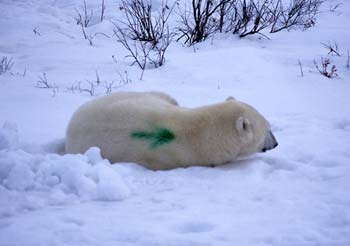
Copyright © Noella Ballenger
Bears who have become pests or who get into trouble are marked. If they persist in the bad behavior, they may be tranquilized and flown to a more isolated area or sent to a zoo.
If a polar bear is visiting the town dump or in other ways making a pest of himself, he is captured in a bear trap and relocated to a more remote location. Frequently, the offending bear must make a stop at “polar bear jail.” This building is a holding quarters for “wayward” polar bears. Here they may be tranquilized, marked, and radio tagged in the ears. (It’s not possible to radio collar a male bear because his neck is larger than his head, so the collar just slips off). If the bear is a repeat offender and returns after many re-locations to distant areas, she may be shipped to a zoo.
The best way to visit the Churchill bears is on a tour. Because hotel facilities are so limited in Churchill, it’s difficult and often expensive to make individual arrangements. Each day, tundra buggies move out to tour the edges of the bay in search of bears. Tundra buggies are self-contained vehicles with heaters and a pit toilet for the comfort of the passengers. They ride on tires that are six-to-eight feet tall, which puts the happy photographers well out of reach of the bears. Regardless, the bears are quite curious about these unusual smelling “critters with wheels” and readily come close. One situation that I observed was quite revealing:
There are a few small tundra buggies available for rent to individuals. I saw one of these pull up near a bear. The photographer inside popped out of the roof to snap a photograph. I cannot describe how quickly the bear went from casually standing there to a full charge at the vehicle. Nor can I describe how quickly the bold photographer dropped out of sight! The thought came to me that the vehicle was actually a can of bear food. And then I realized that I was sitting in a larger can of bear food. It was an interesting feeling.
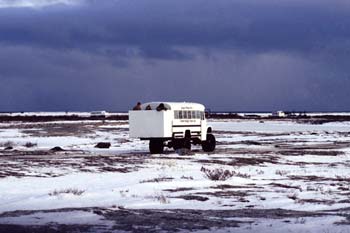
Copyright © Noella Ballenger
A tundra buggy leaves Churchill to view bears one morning.
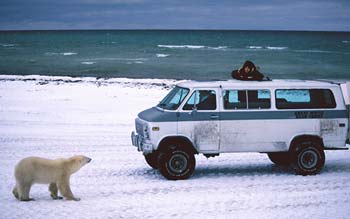
Copyright © Noella Ballenger
The passenger in this very small tundra buggy stood up to get a better view of the bear and the bear charged the buggy. It was at this point that I realized what I saw was a “can of bear food!”
Another option of the tour is to stay several nights at the Bunkhouse. The Bunkhouse is a self-contained facility that is brought out each year as the polar bears begin to gather. The smells of cooking and food bring the bears close. The accommodations are simple, but the photographic opportunities are wonderful.
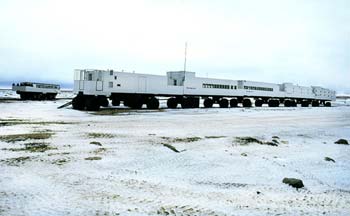
Copyright © Noella Ballenger
The Bunkhouse is a special accommodation that provides a stationary platform for bear viewing. There is the cookhouse, dining room, lounge and a couple of sleeping cars. The bunkhouse has space for about 24 people. The bears are attracted to the bunkhouse by the smell of food and humans.
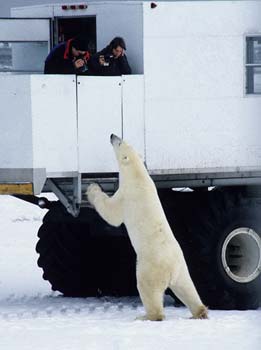
Copyright © Noella Ballenger
Tundra buggies are about 6 feet off the ground because bears can be quite curious about people as well.
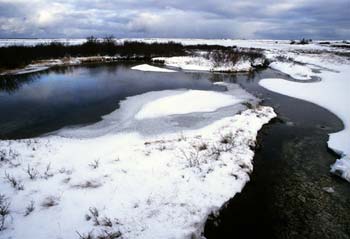
Copyright © Noella Ballenger
The flat tundra areas around Churchill are beautiful in the winter.
We want to understand the great white bear and see him as a part of his environment. As the winter begins to take hold, the tundra is transformed. Along the edge of the Hudson Bay, ice begins to form. As the temperatures drop, the water in the bay becomes “slushy.” The geography of the area allows the winds to push the new thin ice against the shore and compact it much sooner than in other locations. It’s in this area that the primarily carnivorous polar bear begins to feed over the winter months. Its main food is the fur seal, but during the summer and while waiting for the ice to form, bears will hunt mice and any other creatures they can find.
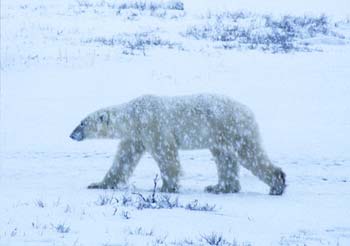
Copyright © Noella Ballenger
With the snow and cold, the pack ice will form in the Hudson Bay and the bears will leave the area to hunt and live on the pack ice for the winter.
The polar bear has been uniquely adapted over thousands of years to becoming an “arctic specialist”–able to survive and thrive in its harsh climate. Its “coat” is composed of three layers: dense fur (guard hairs and thick under-wool that traps heat), skin, and fat. The individual hairs of the fur are like hollow tubes that conduct heat inward. The bears are masters at negotiating thin ice and don’t seem to mind a dip in the frigid waters.
Interestingly, a research project was undertaken to observe and record polar bear migrations. Using infrared film (noted for its high sensitivity to thermal radiation) from the air, the researchers found that the only sign of bear that recorded was the thermal imaging of their breath. Thus, the polar bear is extremely well insulated and loses almost none of its body heat.
by Noella Ballenger

Leave a Reply